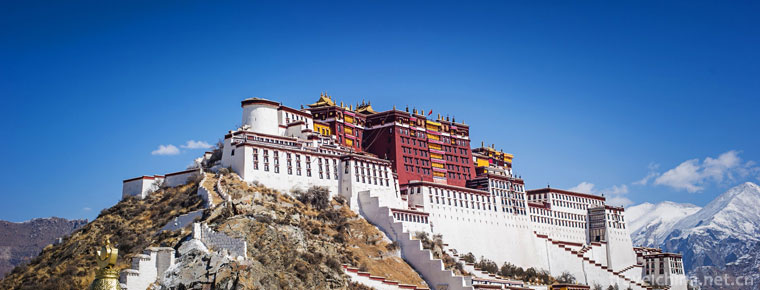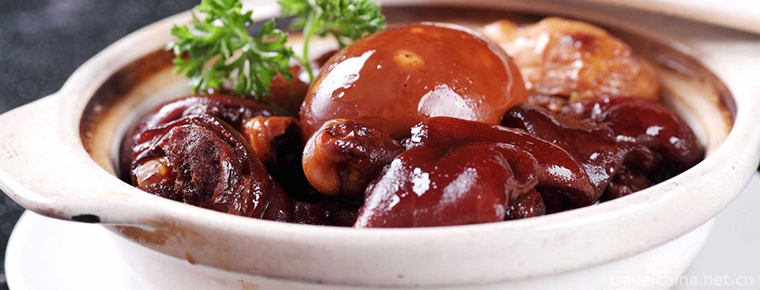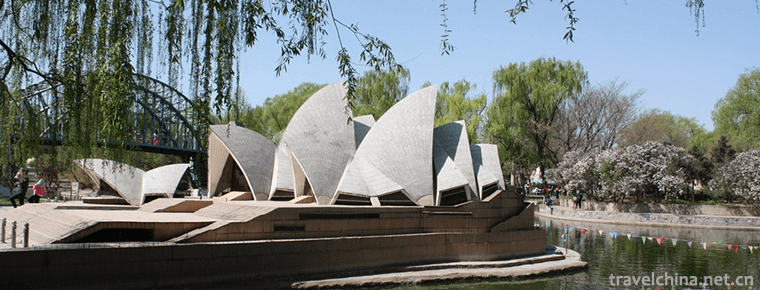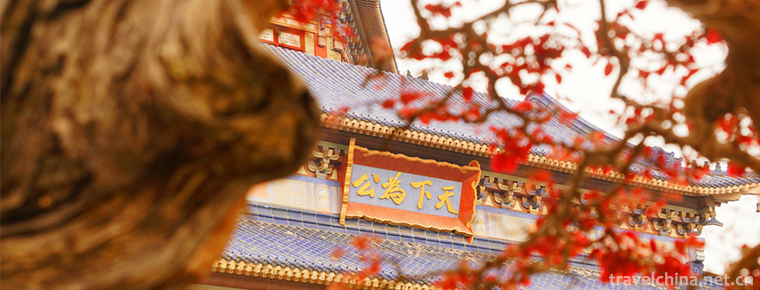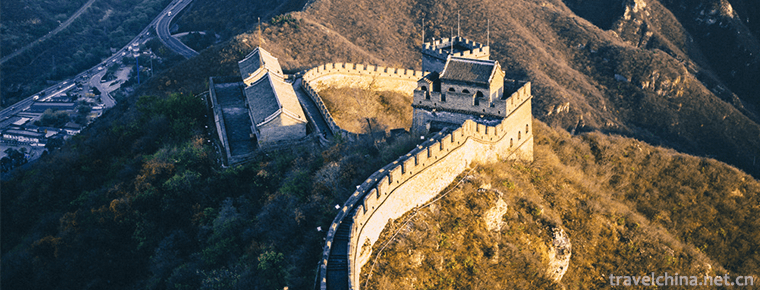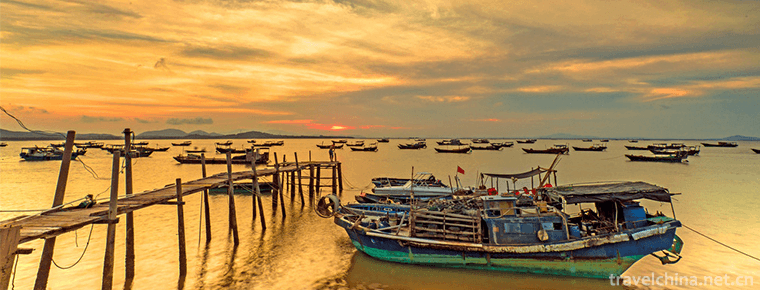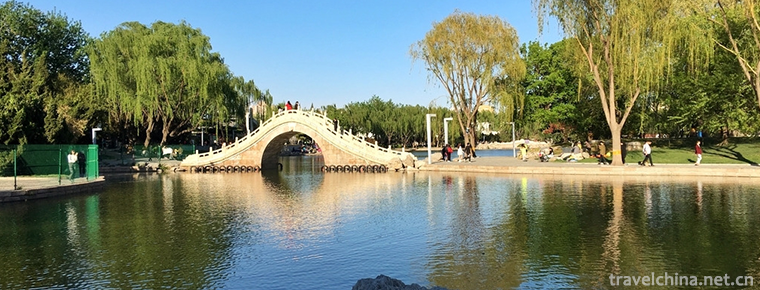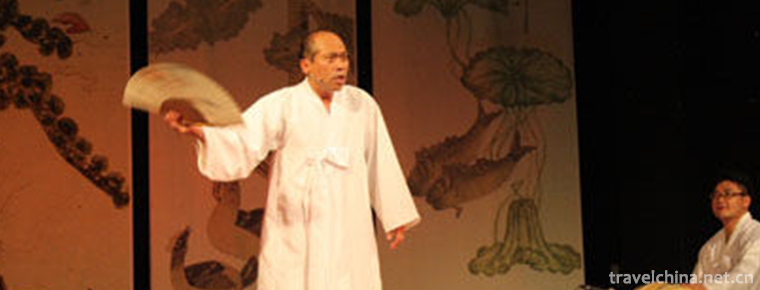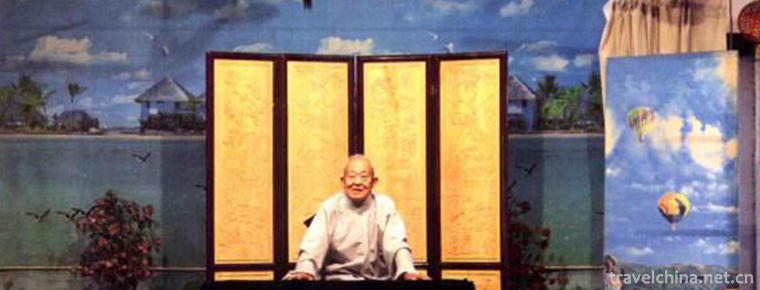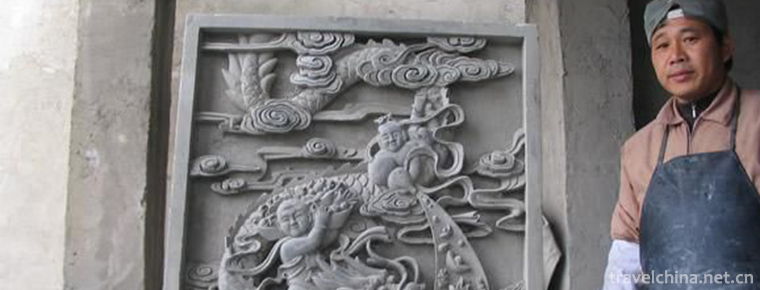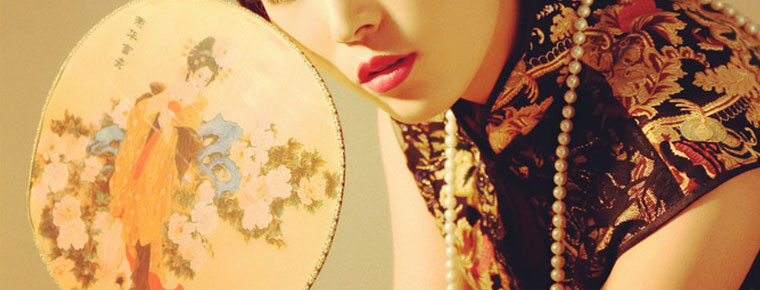Gui Yuan Temple
Gui Yuan Temple
Guiyuan Chan Temple is located in Guiyuan Temple Road, Hanyang District, Wuhan City, Hubei Province. It was built by Master Baiguang in the fifteenth year of Shunzhi Qing Dynasty (1658 A.D.). Covering an area of 10 hectares, there are more than 200 palaces and more than 7000 volumes of various Buddhist classics. Guiyuan Zen Temple belongs to Cao Dong Sect, one of the seven Buddhist Zen sects, so it is called Guiyuan Zen Temple. Guiyuan Chan Temple is also known as the "West of Han Dynasty" because of its ancient trees, flowers and lush human environment. It is also the seat of the Buddhist Association of Wuhan. It is called the four jungles of Wuhan together with Baotong Temple, Xilian Temple and Zhengjue Temple.
Guiyuan Chan Temple is a national key Buddhist monastery in the Han nationality area, National AAAA-level tourist attraction.
Historical evolution
edit
In the 16th year of Shunzhi in Qing Dynasty (1659), two mages, Baiguang and Zhufeng, carried out Buddhist acts of charity, which moved the followers to raise funds to buy Wang's Kuiyuan in Hanyang to build a Buddhist temple.
In 1660, the Zen Hall was completed in the seventeenth year of Shunzhi in Qing Dynasty. Because of the "Yi Jing" of "the good of the Yuan Dynasty, the capital of Qian and Yuan Dynasty, the capital of Kun and Yuan Dynasty, and easy to do, this universal law is unified" and the Buddhist classic "Shurangama Sutra" of "return to Yuan without two paths, convenient to have multiple doors" named "return to Yuan Zen Temple".
In the year of Kangxi (1662), Master Baiguang left Guiyuan Chan Temple to revitalize the ancient Buddhist temple in Jingshan. Leaving "Farewell Salute" became an important part of the "Clean Rules" in the early days of Guiyuan Zen Temple.
In the third year of Kangxi (1664), the main peak ascended the seat of Kaishan Master of Guiyuan Zen Temple and became the first abbot of Guiyuan Zen Temple.
In the seventeenth year of Kangxi (1678), the main peak was quiet.
In the twenty-second year of Kangxi (1683), the white light was silent.
In the 29th year of Kangxi (1690), when Zhou Jinran of Hanlin went to Huguang to preside over the rural examination, he paid tribute to the ascendant of Abbot Dan and wrote The Records of Guiyuan Temple.
In the 30 years of Daoguang (1850), 500 Arhats Hall was built.
Daoguang 32 years (1852), (during the Taiping Heavenly Kingdom Movement) Guiyuan Zen Temple was destroyed by the Taiping Army soldiers, and the Zen Temple was destroyed.
In the eighth year of Xianfeng (1858) of the Qing Wenzong, Xueyan Changxi was presided over by the Chan Monastery of the Yuan Dynasty. The monastery was rebuilt on a piece of ruins and basically restored to its original appearance.
Tongzhi seven years (1868), Zhonggulou reconstruction.
In the thirteenth year of Guangxu (1887), Guiyuan Chan Temple was awarded the four-character plaque of Guiyuan Chan Temple by Emperor Guangxu of the Qing Dynasty and a Book of Longzang. As a result, the status of Guiyuan Zen Temple in the Buddhist jungle was promoted.
In the fifteenth year of Guangxu (1889), Dezong bestowed the four characters "Guiyuan Zen Temple" and "Dragon Tibet". Guiyuan Chan Temple was upgraded from a folk monastery to a royal monastery.
Guangxu 28 years (1902), the reconstruction of Arhat Hall, is the most prestigious monastery building.
In the third year of Xuantong (1911), the Wuchang uprising broke out in October. The General Command of the Civil Army returned to the south of the Yuan Chan Temple, and the grain station was also built in the temple. Therefore, after attacking the temple, the Qing army shelled the temple and destroyed the Daxiong Palace and the Zen Hall. Only 500 Luohan Hall, the Lao Zang Pavilion and the Putong Pagoda survived the military disaster.
In 1953, Guiyuan Chan Temple was listed as a provincial cultural relic protection unit in Hubei Province.
architectural composition
Guiyuan Chan Temple covers an area of 153 mu, and its building is compact and reasonable. The temple is situated in the West and east. The temple is divided into front and back areas. The front area (old area) consists of three distinctive courtyards, namely, the North Court, the Middle Court and the South Court. It has three main architectural groups, namely, the Tibetan Jingge, the Daxiong Baodian and the Luohan Hall.
Main building
Main hall
The Daxiong Palace is the main hall of the temple, or the hall. It is also a place for monks to have morning and evening classes in the temple. It was first built in 1661 in Shunzhi, Qing Dynasty, and has been repaired many times. The present Daxiong Palace was rebuilt in 1908 in Guangxu of Qing Dynasty. In the middle of the hall, there are statues of Sakyamuni sitting on both sides of the hall, with their disciples Ananda and Kaye, both of whom are born-out sculptures. The four characters of the banner "Daxiong Palace" were written by Feng Jiahao, a great calligrapher in the Qing Dynasty.
On the high platform in the center of the palace, the statue of Buddha Sakyamuni is enshrined. In the niche on the back of the statue of Buddha, the colored clay sculpture of "Island Guanyin" is presented. This group of large group sculptures, which are 6 meters high, 4 meters wide and 30 degrees inclined, are made of silk, Brown hemp and other raw materials.
On the walls on both sides of the hall are stone carvings of the eighteen Arhats. In most temples, the eighteen Arhats appeared in the form of statues, while the current abbot of Guiyuan Chan Temple, Master Longyin, used the Arhatic stone carvings of the Qing Dynasty monk Zhuchan Master to worship the temple, considering that the statues occupied a large area and affected tourists'sightseeing.
Sutra Pavilion
The Tibetan Sutra Pavilion is the main building of Beiyuan, where Buddhist classics and art treasures are collected. Founded in the eighth year of Emperor Kangxi in the Qing Dynasty (1669), it was destroyed by war. The fourteenth year of Guangxu (1888) was rebuilt. Xinjing abbot of Guiyuan Chan Temple (1920-1922) raised funds to rebuild the Tibetan Classic Pavilion again. The existing Tibetan Classic Pavilion is about 25 meters high and has two stories and five rooms. It is an ancient building with brick and wood structure in Wuhan. It was rebuilt in 1920 and is a building style. The Cabinet Hall of Tibetan Sutra is tall and broad, with a statue of Baiyu Sakyamuni Buddha in the middle. It was presented to Guiyuan Chan Temple by disciples of Burmese Buddhism in August 1935. It weighs about 2 tons. It is carved by Burmese craftsmen with a opal stone weighing about 3 tons and about 2 meters high. It is one of the "Four Jade Buddhas of China" in the 1930s.
Luo Han Tang
Luohan Hall in the temple was built in Daoguang period of Qing Dynasty. It was destroyed in Binggong in 1852. It was rebuilt in 1902. It has a history of nearly 200 years. Arhat Hall is laid out in the shape of "Tian", with more than 500 statues. The 500 Arhats of Guiyuan Temple are based on the rubbings of 500 Arhats of Zhusheng Temple in Hengshan Mountain of Nanyue. The two sculptors of Huangpi took nine years to shape the 500 Arhats by using the "de-moulding" technology.
New Mountain Gate
The outer gate of Guiyuan Temple is a new one, which is designed in antique style. The door of the outer Mountain Gate is an archaic vermilion Palace gate, with three open doors, one large arch in the middle and one small arch in the left and right.
Most of the temple nameplates are hanging in the lintel of the temple gate, while Guiyuan temple is a straight plaque, which is rare in the whole country and can be called a surprise. Because in the imperial period, only the monastery bestowed by the emperor can be inscribed directly. The plaque is 6 feet high, with four big characters of "Guiyuan Zen Temple", neat font and vigorous style. It imitates the handwriting of Feng Jiahao, a famous calligrapher of the Qing Dynasty. In Wuhan, the temples with hanging plaques belong only to the Yuan Chan Temple and the Gude Temple.
Mountain Gate
The Mountain Gate is a classical eight-shaped gate, which opens in the morning and symbolizes auspiciousness. The stone lion in front of the gate of Guiyuan Chan Temple is 2.3 meters high. The original town is a relic of Ming Dynasty. After the liberation of Wuhan, the Yamen of Xianzheng Street in Hanyang were abolished, and the followers moved the abandoned stone lions to Guiyuan Zen Temple.
Changming Presbyterian Memorial Tower
Changming Presbyterian Memorial Tower is also called Tower Courtyard. This article introduces the life of Changming elders, exhibiting their relics, calligraphy and so on. There are also places for receiving believers and the Past Life Hall.
Guiyuan Zhengzang Library
Guiyuan Zhengzang Library is the first modern Buddhist theme library initiated by the monastery, co-constructed by the followers, relatively complete supporting facilities and open to the society. It has a building area of nearly 14,000 square meters, six-storey imitation of the Qing Hui style architecture. The main functional buildings include Guiyuan Temple Zhengzang Library and Guiyuan Dajue Binshe.
Guiyuan Temple Library is open to the public free of charge. In the early stage, Buddhist books were the main books in the collection, and other books were gradually added. At last, 200,000 books were collected. Buddhist books accounted for 40% and other books accounted for 60% of the scale.
Yun ji Zhai
The predecessor of Yunji Zhai is Nanyunshui Lao House rebuilt during the Republic of China. Nanliao was built in the 23rd year of Kangxi. It was rebuilt after being destroyed twice by Xianfeng and Xuantong soldiers. Vegetarian restaurants were opened by 28 monks in the monastery in 1953. On November 21, 1980, Singapore Prime Minister Lee Kuan Yew and his delegation hosted the state vegetarian state banquet, which was a brilliant page in the history of vegetarian restaurants. Vegetable dishes in Zhainei are light and salty. There are more than 200 kinds of vegetable dishes in Zhainei.
Treasure Temple of Heaven King
Five cast bronze statues are worshipped in the Palace of the Heavenly King of Wealth, and the Lord worships the Heavenly King of Wealth, each respecting about 3 tons. The Heavenly King of Wealth, also known as the King of Pishamen, is in charge of financial resources. The King of Treasure rides on a lion, located in the southwest of the rear area.
Yuantong Pavilion
The word "Yuantong" comes from the Buddhist Scripture "Yuantong Bodhisattva", which broke ground in the first half of 2009. It is a combination of palace stone pedestal and mahogany tenon and mortise structure. Its style is a three-storey, four-drop Pavilion building, which is one of the large traditional wooden structures in China. The base of this building is 60.8 meters in length and width, covering an area of 4139 square meters and 60 meters in height. In addition to 25 Yuantong Bodhisattvas, a 3.2-ton "treasure of the town temple" and Hotan Jade, previously shipped to Guiyuan Temple, will be built into a 2-ton Maitreya Buddha statue and displayed here. On August 26, 2011, Yuantong Pavilion has successfully held the "Shangliang" ceremony, which is expected to be completed in 2012.
bell tower and drum tower
The bell of Guiyuan Bell Tower was cast on the "Ghost Bell of Guiyuan Zen Temple". It has been nearly half a century since its founding. It records the handicraft technology, wisdom and cooperation spirit of the working people in Wuhan. Take the Buddha Gate "Xiaoxian strike, that is, break the long night, alarm sleep; curtain strike. They are faint and ignorant." Religious doctrine. In the past, the bell and drum hall, or the Great Law Society, had to "bell and drum ring together" every morning and evening, with a full-time monk "knocking board".
pond where fish are released
The setting of the Free Life Pool embodies the Buddha's spirit of compassion and abstinence from killing. The release pond is 15.6 meters wide and 25 meters long. It consists of 64 stone pillars and 64 stone slabs, each of which is carved with a stone lion. There are four characters in the four corners of the pool, each of which is nearly one meter square. Water-spraying lotus blossoms are arranged in the north and south of the pond: when hot, they spray water to cool the aquarium; when cold, they let the aquarium inhabit lotus petals and bask in the sun.
Guanyin Pavilion Double Side Guanyin
Guanyin Bodhisattva is a double-sided shape, brass casting, surrounded by white marble railings, 18.8 meters high, standing on a 3-meter-high lotus terrace, weighing up to 20 tons, double-sided Guanyin is the basic form of two-arm Zhengguanyin, also known as the Saint Guanyin image.
Wei Tuo Dian
The stone lion in front of Wei Qian Temple is a century-old cultural relic, which came from the hands of craftsmen in the Qing Dynasty. The plaque on the gate "Guiyuan Temple" is Li Yuanhong's handwriting. In the first year of the Republic of China (1912), Li Yuanhong took the lead in donating money and presented three huge plaques to congratulate him. Among them, "Guiyuan ancient temple" and "Shengda grand" have been handed down to this day, while "Three Rides Guangyun" was destroyed during the Republic of China, and now only the copy is hanging on the door of the old Tibetan Pavilion.
On the back of Wei Pian Hall, there are four big characters "Turn back to shore" written by Changming Master. Among them, the word "shore" and "mountain" are not on the top, but on one side. This book Zen is meant to lay down the burden in the heart of the practitioner, not to press the "mountain" in the heart. There is also a inscription of Changming Master in the Hall of Wei Pian, which is above the statue of Maitreya Buddha worshipped on the front. It says "Everyone is happy". Among them, the word "big" is particularly thick in the middle. To remove the word "person" is like the belly of Maitreya Buddha. The two "mouths" of the word "happy" are not completely sealed, which means that "laughter often opens up", which is in response to the two lines of the couplet on the two sides of the Buddha statue: "generosity can bear the world's embarrassment, compassion often laughs at the world's ridiculous people".
Three Temple
The Three Saints Temple used to be a place for monks to meditate and meditate on sutras. It mainly worshipped the "Three Saints of the West". The three Buddhist statues were carved from camphor wood about 4 meters in height and 1.5 meters in diameter. There are four groups of hollow relief statues in front of the curtain fence for the table.
protective measures
After the founding of New China, the people's government carried out the policy of freedom of religious belief, protected cultural relics and monuments, and continuously maintained and repaired Guiyuan Temple. During the Cultural Revolution, under Zhou Enlai's care and protection, the temples were not destroyed, and religious facilities and precious cultural relics were well preserved. Since 1973, Guiyuan Temple has undergone large-scale maintenance. Daxiong Palace, Tibetan Classic Pavilion, 500 Arhat Hall, Dashi Pavilion, Bell and Drum Tower, Cuiwei Pavilion and other buildings have been renovated.
religious activities
From 9:00 to 11:00 a.m. on June 22, 2013, the third phase of the meditation activity of Guiyuan Chan Temple - "Life Chan Practice in Life" was successfully held on the third floor of Zhaitang. This meditation activity is presided over by the Buddhist monk Dengkuan, a visitor of the temple, and the guest speaker is Gushi Zhou Jun.
On July 13, 2013 (the sixth day of June in the lunar calendar), the sixth meditation activity of Guiyuan Chan Temple in Wuhan in 2013 - "chanting meeting" was held on the third floor of Zhaitang. The abbot of this temple, Master Longyin, personally led the ten good people to recite the Diamond Sutra.
On the morning of April 10, 2014, a delegation of 59 Taiwanese Buddhists visited Guiyuan Chan Temple in Wuhan, Hubei Province, with Vice Chairman of Taiwan's "Chinese Buddhist Association" and Chairman Ming Guangda, abbot of Haiming Chan Temple, as the head of the delegation, and Chairman of Haiming Chan Temple as an advisor to Master Tao.
On September 28, 2014, Guiyuan Chan Temple in Wuhan launched the sixth Golden Autumn Blessing Cultural Festival in Guanyin Square.
On March 14, 2015, Guiyuan Monastery's "One Day of Zen Practice" cultural activity invited Master Yanshen to give a lecture and talk with Master Longyin, the abbot of Guiyuan Monastery.
Tourism information
Opening Hours
08:30-17:00, from the first day of the first month to the fifteenth day of the first month: 06:00-19:00.
Suitable time for play: March-May, September-November
Ticket Price
20 yuan per person; 40 yuan per person on New Year's Eve, the eighth and fifteenth nights of the first lunar month.
Traffic routes
Take 26, 42, 531, 535, 553, 585, 607, 608, 648, 705, 707, 708, 710, 711, 740, 803 and tram 5 to Zhongjiacun on Hanyang Avenue and walk 576 meters.
Lanjiang Road Station: A Kou is nearest to Guiyuan Temple.
From Banjiang Road to Parrot Avenue, and then from Chaoyang Road to Guiyuan Temple Road (about 12 minutes walk)
Zhongjiacun Station: BCD has three closest ports.
Port B: From Hanyang Avenue to Xiqiao Road, then to Cuiwei Road, to Guiyuan Temple (about 15 minutes walk)
C, D: From Parrot Avenue to Cuiwei Road, to Guiyuan Temple (about 12 minutes walk)
Hanyang Railway Station: Port A is near. Walk from Hanyang Avenue to Guiyuan Temple Road and walk to Guiyuan Temple (about 14 minutes)






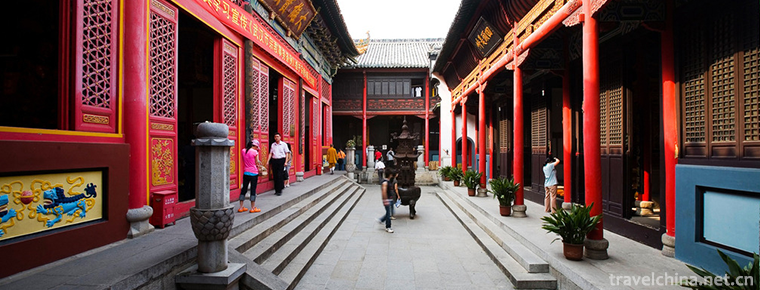
-
Jiang Cudan Canton style pig leg
Except for those with internal fever, dry stool and weak spleen and stomach function, breast enlargement products can be used as a warm-up tonic in winter..
Views: 234 Time 2018-11-02 -
World Park
The World Park is located in Dabaotai, Huaxiang, Fengtai District, Beijing. It is 16 kilometers from the city center and 8 kilometers from Beijing West Railway Station. It is a national 4A-level sceni.
Views: 83 Time 2018-12-19 -
Sun Yatsen Memorial Hall
Zhongshan Memorial Hall is located in Dongfeng Middle Road, Yuexiu District, Guangzhou City, Guangdong Province. It was built by the people of Guangzhou and overseas Chinese to commemorate Dr. Sun Yat.
Views: 147 Time 2018-12-22 -
The Gu Guan Great Wall
Guguan Great Wall is located in Xinguancun, Pingding County, Shanxi Province, on the western side of Taihang. It starts at Niangziguan Jiayugou in the north and reaches Baihui Village in the south..
Views: 118 Time 2019-01-12 -
Hailing Island Dajiao Bay Sea Silk Road Tourist Area Yangjiang City
Dajiaowan Scenic Area of Hailing Island in Yangjiang is located in Zhapo Town of Hailing Island, Yangjiang City, Guangdong Province..
Views: 103 Time 2019-01-13 -
Longtan Park
Longtan Park is located opposite Longtan Beili District, Dongcheng District, Beijing (Chongwen District), and is currently a national 4A-level tourist park. Longtan Park .
Views: 126 Time 2019-02-06 -
Eyebrow household
Eyebrow households, distributed in Shanxi, Shanxi, Shaanxi, Gansu, Western Henan and other provinces, also known as "Eyebrow Shao" or "confusion", are named for their euphemistic m.
Views: 87 Time 2019-05-31 -
Pansori
The main art of Korean folk art is Pan Suo Li, which appeared in the 18th century. At the beginning of the 20th century, it was introduced into China with the immigration of Korean nationality. The wo.
Views: 178 Time 2019-06-08 -
Pudong Storytelling
Pudong storytelling, also known as cymbal books, Shanghai books, peasant books and so on. Pudong pays equal attention to both storytelling and singing, pays attention to plot, and has a fast rhythm. T.
Views: 109 Time 2019-06-09 -
Production Techniques of Gold Bricks in Suzhou Royal Kiln
Royal kiln bricks production technology is complex, up to 20 processes, including the main processes of mud selection, mud drilling, billet making, kiln loading, firing, bass water, kiln out, grinding.
Views: 165 Time 2019-06-17 -
Cheongsam and fan
As the saying goes, the pipa is half covered. What did ancient beauties use to cover their faces? The first reaction must be a fan! Fans are also the most common accessories in ancient times. Men use paper fans and women use round fans. Chinese traditional fan culture .
Views: 352 Time 2020-12-11
